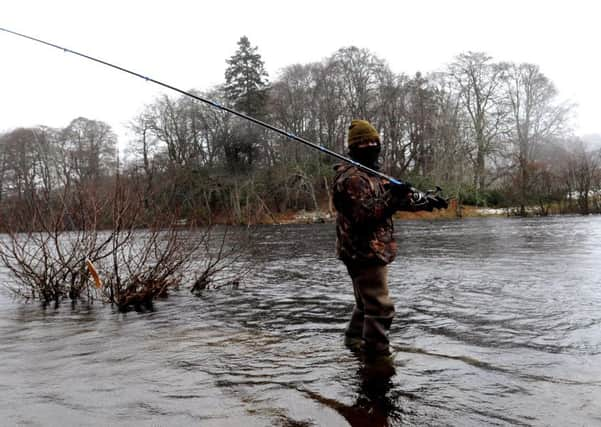'˜Dry' Tayside salmon river tributary reopens after 60 years


The opening at Meikleour on the River Tay has been boosted by confirmation that the “dry” River Garry tributary will flow again after over 60 years.
Spawning salmon will have access following a landmark agreement.
Advertisement
Hide AdAdvertisement
Hide AdA section of one of the Tay’s most important tributaries is soon to have consistent flows restored after decades of very extensive water abstraction.
Ten miles of the River Garry - much of it clearly visible from the A9 - which has been essentially dry since the mid 1950s, will run again, promising major benefits for adult salmon spawning and juvenile production.
The formal announcement was made at the Tay District Salmon Fisheries Board’s (TDSFB) annual ceremony to celebrate the opening of the River Tay salmon fishing season.
SSE said engineering work will commence in a few weeks time to restore flows to the River Garry, some 15 miles north of Blair Atholl in Highland Perthshire. An initial breach has already been made at the Struan Weir to begin this process.
Bill Jack, chairman of the TDSFB, added: “This most welcome news is a milestone in salmon conservation.
“Some ten miles of the main river and seven miles of tributary will once again be capable of producing salmon.
“We estimate that this is likely to produce an additional 1500 adult, predominantly spring, salmon returning to the river annually.
“It is difficult to envisage any other single project that would benefit salmon in the Tay system as much as this will. We are very pleased to have been able to work with SSE and SEPA to a successful conclusion.”
Advertisement
Hide AdAdvertisement
Hide AdJim Smith, SSE’s Managing Director of Generation, said: “Ever since its inception as the Hydro Board in 1943, SSE has been charged with the responsibility of managing the waters carefully where we operate our hydro assets.
2Our guiding philosophy is to work with all parties to balance the nation’s need for power with our environmental responsibilities.
“We recognise this stretch of the River Garry as a special case for water restoration. Although it will result in a loss of potential hydro energy for SSE we are delighted to play our part in restoring water flow and allowing salmon back to the upper Garry.”
Ian Buchanan, Head of Regulatory Services at the Scottish Environment Protection Agency (SEPA), said: “It is most satisfying that an agreement has now been reached whereby flow will be restored to the River Garry that is sufficient to restore the river’s ecology while minimising the loss of renewable energy generation.
“This is by far the most significant river restoration project of this type that has been achieved to date in Scotland, if not the UK, thanks to the EU Water Framework Directive.”
The ceremony to mark the beginning of the new salmon season took place with the traditional blessing of a quaich of Glenturret whisky.
Following the ceremony anglers fished the Upper Islamouth beat in exchange for a £10 donation to Angling For Youth Development, the Scottish charity that aims to offer people of all backgrounds and abilities the opportunity to participate in angling and angling-related activities.
The River Garry, a tributary of the River Tummel and part of the extensive Tay system, was partially harnessed for the production of hydro electricity in the 1930s with further works completed by the North of Scotland Hydro Electricity Board in the 1950s.
Advertisement
Hide AdAdvertisement
Hide AdThis resulted in the abstraction of the entire flow of the river as well as some tributaries at several locations.
This was by far the largest river in Scotland to have been impacted to that extent. This result was the loss of the river’s salmon population.
A weir was constructed at the lower end of the river in the early 1950s to block adult salmon access in times of flood because they would only become stranded later.
